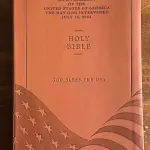
Contemplation and mindfulness offer a deeper relationship with the divine. I have been doing a lot of reading lately as I am getting ready to teach my next class here in a few months. One of the many themes I come back to often in my life are the two years I spent considering the monastic life and priesthood in the Catholic church. Even though I would eventually meet a pretty red head who would feed me tacos and become the mother of our four amazing daughters, those lessons I learned in those two years have stuck with me.
The Backstory
I grew up with several religious orders, most notably the Redemptorists and the Benedictines. The Benedictines had the most impact on my spiritual development. From them, I was exposed to the peace and justice issues that would shape my college career as a social work major and later my work as an itinerant preacher and now as a therapist. It was my exposure and subsequent consideration of this life that would ruin my future as a minister. Not that I am complaining, I deeply love the faith that I have cultivated even though it has put me at odds with most if not all the churches I have worked with.
When I was either a freshman or sophomore in college, I took some course on theology and we had to read Bill Shannon’s book, “Seeking the Face of God”. In this book, I would learn about the four stages of lectio – lectio, meditatio, oratio, and contemplatio. In this post, I want to revisit these lessons and explore how you can engage in a more meaningful relationship with your spiritual life and your walk with God within your faith tradition.
Seeking the Face of God
Quoting Eckhart or Merton, Shannon offers “who once said if he prepared a sermon and went into a church and found it empty, he would nonetheless go ahead and deliver the sermon” (Shannon, 1992, p. 1). This is how prayer (oratio) works, no matter how isolated you feel from God, even if you think God is not listening, go ahead offer your prayer and then see what happens. Perhaps if nothing happens, you are holding too tightly to your expectations of the prayer and not letting the collective work of the divine to intercede at the moment.
Jesus is attributed to have said this about prayer: But when you pray, go into your room, close the door and pray to your Father, who is unseen. Then your Father, who sees what is done in secret, will reward you (Mathew 6:6, NIV). The contemplative life is often one of quietude and thought. You take in more information, you consider meaning more intently and as a result, you live more deeply. There is a danger with the contemplative life, and it is this, it will move you out of a place of believing what you are told to believe into a more experiential faith. These days, this is called deconstruction, but in my day, when I first started this journey 25 years ago, this word did not exist.
Silence according to Shannon, “unless our words are born out of a reflective silence, they are apt to be curtains that cover reality rather than windows that reveal it” (Shannon, 1992, pg. 3). One of the many things that bothered me in the religious traditions that I worked in as a pastor were the long wordy prayers that some offered. Folks would go on and on and make so much noise with their prayers, often seeming to inject their will into the prayer rather than letting God’s will speak. For a different paper, I really do not believe in the idea that God is all controlling.
I reminded of Tibetan singing bowls that when struck, offer a tone that eventually draws your attention inward as it dissipates after being struck. This is what a good prayer does for me. Simply for me, “Come Holy Spirit” or “Come Breath of God” are the beginnings of many of my prayers. These simple openings draw my attention to the presence of the divine and set the intention of my supplication. Back to Shannon, again referring to Merton, he offers this quote from Merton, “Strictly speaking I have a very simple way of prayer. It is centered entirely on attention to the presence of God and to His will and His love” (Shannon, 1992, pg. 10). Reading this possibly 25 years later, this line still tracks for me.
Lectio and the others
There are three other elements of lectio or divine reading that were mentioned at the top of this post. Lectio or divine reading is core to what I learned in those two years of formation. My mentor would give me something to read, and I was charged to read it in such a way that I dwelled on certain words and phrases and then notice what was stirred up in me. Some of the monastics I would run into later in my journey would talk about chewing on a passage as a cow would chew on its cud. This does not have to be done solely with religious texts, this was hugely beneficial later in my career when I was doing my Master’s work.
Part of the work of lectio is the work of contemplation and meditation, two very over used words today, but 25 years ago were vague concepts. Centering prayer had not quite reached the Protestant churches I was working with, in fact, I was deeply criticized for being too Catholic when my first governing board heard me use this language. Now a days, everyone talks about centering prayer. When I first heard of these words 28 years ago, at the very beginning of my journey, I was enamored. To understand why this is so phenomenal is that I was and still am diagnosed with attention deficit hyperactivity disorder. Sitting still is not my strong suit or having a single thought for more than a few seconds can be a real struggle. But, from 18—20, there I found myself every morning from 0600- 0730 in the school chapel or at my local parish praying my rosary and listening to morning mass.
What I learned in those two years of discovery was that lectio divina can enhance one’s prayer life by providing a structured and intentional way of engaging with scriptures, religious text or even the news. This practice brings a contemplative dimension to prayer, allowing for a deeper communion with God. By incorporating the Word of God into our prayers, we are able to bring a greater depth of meaning and connection to their conversations with God. This integration of Scripture and prayer enriches and enlivens one’s prayer life.
Reference:
Shannon, W. H. (1992). Seeking the face of God. Crossroad.













